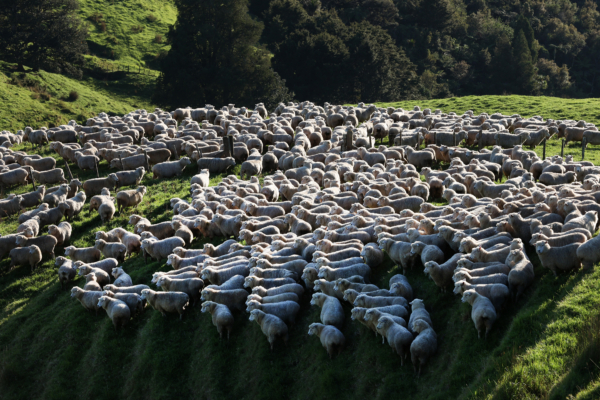New Zealand, a country with abundant tourism resources and stunning landscapes, is known for its countless sheep. It is one of the few countries in the world where sheep outnumber humans, a phenomenon that has persisted for decades. However, the country is now undergoing a gradual transformation in its sheep industry, slowly reducing the ratio of sheep to people.
In terms of land area, New Zealand is similar to the United Kingdom, but its population is 13 times smaller. This means that New Zealand has ample space to accommodate a large number of sheep. Over the past 150 years, the sheep industry has been a cornerstone of New Zealand’s economy. The number of sheep in the country continued to grow until it peaked in 1982. At that time, with a population of only 3.2 million, there were over 70 million sheep, averaging 22 sheep per person.
Now, with global demand shifting towards synthetic fibers, the price of wool has been declining for years, leading New Zealand farmers to change their land use practices and reduce the number of sheep. Currently, dairy products dominate New Zealand’s export market, with agriculture and horticulture playing a significant role.
According to statistics released by the New Zealand government on May 6, the country’s population is 5.3 million, with 23.6 million sheep, averaging 4.5 sheep per person. Compared to 1982, this sheep-to-people ratio has significantly decreased.
The New Zealand Statistics Office indicated in 2023 that the average number of sheep per person in the country fell below 5 for the first time in 2022. The latest data released covers sheep numbers up to June 2024 and shows a decrease of 6 million sheep compared to a decade ago.
Tehseen Islam, a spokesperson for New Zealand’s agricultural statistics, stated that farmers always decide how to “most profitably utilize” their land, which may be a key reason for the decline in sheep numbers.
Toby Williams, spokesperson for the lobbying group Federated Farmers, mentioned that farmers in the sheep industry have shifted to more profitable ventures such as dairy farming or converting land from farmland to pine forests for selling carbon offsets.
Williams commented, “To be honest, the wool industry has almost reached a breaking point, or rather, a point of no return.”
Similar trends of decreasing sheep numbers have been observed in other countries that raise sheep. In Australia, New Zealand’s close neighbor, where sheep also outnumbered people, the sheep population is declining, with an average of about 3 sheep per person.
Alan Thomson, CEO of Beef + Lamb New Zealand, told the New Zealand Herald that the increase in pine forests has led to the decline in sheep numbers.
Thomson stated, “The key factor is the recent changes in land use due to tree planting. We see entire sheep and cattle farms transformed into forest lands to earn carbon credits.”
He mentioned that while there are some signs of “revival” in the sheep industry, the low return on investment in wool is also a factor contributing to the decrease in sheep numbers.

